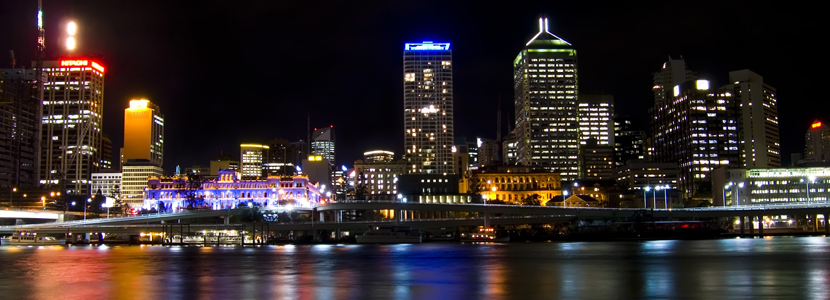While installation costs of sustainable materials are often higher, the demand for them, and their long-term benefits, can more than compensate.
A new kind of hotel experience is taking hold in our cities, a synthesis of ecotourism, the urban spa and traditional hotel service.
Fantasy-oriented Las Vegas-style hotels aside, in the midst of skyrocketing fuel prices, global warming, and the constant reminder of inequities in global standards of living, hotels’ days may be numbered as havens for conspicuous consumption. There is a new hotel aesthetic taking shape.
Today, many well-heeled guests would rather take to the woods then take room service, as ecotourism signals a significant trend in high end consumer travel. Maho Bay Camps on St. John, in the U.S. Virgin Islands, is a pioneer development. Opening in 1976 and now encompassing four green resorts, Maho Bay has won some of the world’s most prestigious environmental awards for sustainable development. Here we find an emergent notion of Hotel. The Maho resorts use recycled building materials, and recycled glass tiles; the buildings were also in some cases planned around the existing native plants and elevated walkways that prevent soil erosion. Their cottages use passive solar design, photo voltaic panels, rain collectors and breeze scoops.[1] Like any hotel, the goal is relaxation, but relaxation with a conscience.
Still, not everyone can afford the time or money needed to get away from the city. What’s more, there’s an inescapable irony to jetting off to a sustainable haven. For all the good that places like Maho Bay do, flying oneself to an exotic but sustainable locale is arguably worse for the environment than flying in foie-gras from Paris: mass tourism can have a devastating effects on the natural environment.
For people in need of a pick-me-up, an alternative to leaving home for the tropics is to bring the tropics home. In 2003, according to the International Spa Association’s Industry trend report, 41% of Spa revenue – some 4.5 billion dollars – came from hotels[2], much of the spa revenue earned from mid winter, sun-deprived guests. Hotels have taken notice.
Hamburg’s Oeketel Hotel is an example of a new hotel that integrates elements of the spa and rural ecotourist resort principles with urban notions of sustainability. Built in 1996, the hotel claims to have almost exclusively used construction materials that had a low environmental impact. All doors and furniture were manufactured from solid wood and their surfaces were oiled. For the flooring, untreated virgin wool carpets and solid beech wood floorboards were put to use. And the visiting epicure can enjoy a breakfast buffet contains predominantly organic products.[3]
As far as interior design goes, sustainable hotels favor sustainably harvested woods, as well as recycled glass tiles and large, energy efficient windows. Glass tiles and energy efficient windows ensure that both the environmental footprint and cost of the service is kept low, while the hotel maximizes light and heat.
In Paris, the Ibis Porte de Clichy has a front wall covered in photo voltaic panels, converting sunlight into electricity. At San Francisco’s new Orchard Garden Hotel, which opened in September 2006, every has a door-key-card-controlled electricity system – once you leave the room, its power use automatically goes on ‘sleep’ mode.[4]
Some hotels may be “greenwashing” – claiming the cachet of eco chic without making a real committement to change. For instance, offering customers the choice to skip daily linen changes is simply better for Hotels financially, and may have nothing to do with a commitment to sustainability from the hotel management. Nevertheless, the fact that Hotels are even trying to give lip service to environmentally responsible materials suggests that something fundamental has changed in the hospitality industry. And indeed it has. Starwood Capital Group announced in 2006 the launch of the first luxury, eco-friendly global hotel brand. Called “1” Hotel and Residences, the first will be the “1” Hotel and Residences Seattle, opening in late 2008, followed by hotels in Mammoth Mountain, California; in Scottsdale, Arizona; Ft. Lauderdale, Florida; and Paris, France.[5]
Each new “1” will be built to Leadership in Energy and Environmental Design (LEED) standards – standards that requite a high score in five key areas of human and environmental health: sustainable site development, water savings, energy efficiency, materials selection, and indoor environmental quality.
Sources
- [ ↑ Back to top ] Maho Resort Website
- [ ↑ Back to top ] "A Day at the Spa is A Necessity" by Chelsea Butler, May /June 2006, Hospitality Construction Magazine
- [ ↑ Back to top ] Oekotel Hotel Website
- [ ↑ Back to top ] "The Ultimate Green Hotel" by David Propson, Travel and Leisure Magazine, July / Aug 2006
- [ ↑ Back to top ] Starwood Unveils First Five Star, Environmentally Friendly Hotel Brand by GreenBiz.com Oct 19, 2006









